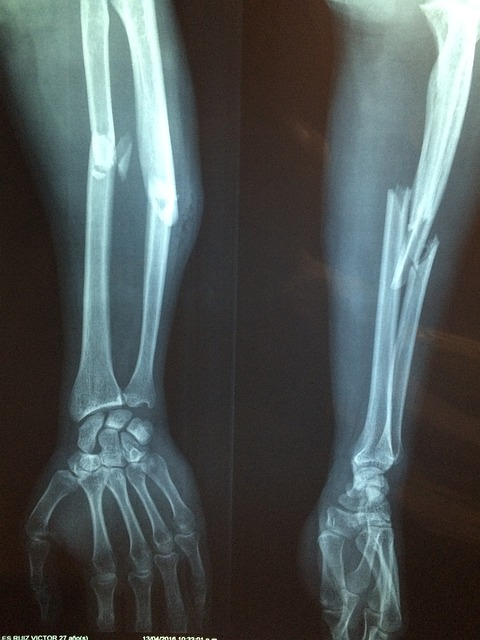A rear-end collision can change your life in a fraction of a second. According to the National Highway Traffic Safety Administration, almost one-third of car accidents result serious injuries from rear-end collisions. Such an incident can leave you with permanent emotional and physical injuries.
Rear-end accidents happen every day because they have seemingly simple causes related to distractions and absent-mindedness. You may be arguing with your spouse, distracted driving, trying to get your children in the back seat to settle down, or letting your mind drift as you think about plans for the weekend.
Anything that takes your mind away from the immediate conditions of your safe driving, can contribute to lead vehicle being involved in a rear-in crash. Here are some of the most common auto accident-related injuries and how you can earn compensation.

What Happens When You Get Rear-Ended
You have kinetic energy in your body while driving. This form of energy naturally occurs anytime you are in motion. Usually, when you stop a car, the kinetic energy dissipates in the form of heat through the brakes. A rear-end crash doesn't afford you the time to transition that energy out of lead vehicle into your body gradually, so it causes a jolt.
While the car absorbs some of the energy during the rear-end collision, your body does too. The rear end car accidents driver side impact may feel like a punch to your head, spine, neck injuries or chest. If the rear-end car accident lawyer side has enough force, and enough distance, it can cause broken bones, bruising, and lung injuries.

Most Common Injuries in a Rear-End Collision
Whiplash
Whiplash occurs in conjunction with sudden and forceful pressure on the neck. If you are in a car accident, your head may jolt backward from the momentum at impact, similar to cracking a whip. The soft tissue injury can leave you with neck pain, stiffness, limited range of motion, headaches, dizziness, and fatigue.
Spine and Back Injuries
Spine and back injuries are the most severe if you do not have time to brace yourself. The collision can cause lingering soreness, pain, and stiffness in your muscles and soft tissue. More dramatic cases of severe injuries can alter your quality of life because of broken vertebrae or pinched nerves.

Head and Brain Injuries
You may sustain a head or brain injury, even if you're driving at low speeds. If the airbag deploys, it can cause burns, scrapes, or lacerations on your face. A direct impact to your skull can result in severe concussions or brain trauma. If you blackout during or after the accident, there's a good chance you may sustain brain damage.
Broken Bones
Broken collar bones are commonplace in rear-end car crashes because the seatbelt goes over your clavicle. The strap rips the bone from the muscle during the car accident, and it can potentially puncture your lungs. You may also break the bones in your hand or wrist as you brace for impact with rear vehicle.

Paralysis
According to the Christopher and Dana Reeve Foundation, 5.6 million Americans are paralyzed, with many individuals sustaining their injuries in a car accident. Paralysis occurs because of significant damage to the spine or brain. The condition may be irreversible, even with physical therapy and medical treatment.
What to Do if You're in a Rear-End Collision
Seek medical attention following any car accident. Often, you may not realize that you have sustained an injury at fault driver, so it's wise to seek medical attention and get checked over by medical personnel or paramedics anyway.
A personal injury takes priority over exchanging information or documenting the car accident attorney the accident victim is on scene. If law enforcement officers show up to the accident, they can take the lead driver and care of other factors by recording the crash and filing detailed paperwork.
If you do not sustain a personal injury, share your contact and insurance information with the driver of the other driver's car. You should also take photos of the vehicles involved and videos of wreckage, which you can later use as evidence. Be sure to document your injuries, vehicle damage, and weather conditions.
Once the dust clears and everyone receives the proper, medical care and attention, the police will need to determine the driver at fault. Georgia is a “fault” state (as opposed to a “no-fault” state), which means that the vehicle or driver responsible for causing the accident pays compensation for injuries and damages. You are at fault driver and another person may share fault, such as a 60-40 split, in which you pay compensation based on your percentage of property damage at fault vehicle.
Even if you believe you're responsible for hitting another vehicle, do not admit fault. You're free to express remorse and empathy for negligent driver, but admitting fault will undercut your case during the insurance company' negotiations or at trial. You should only discuss fault privately or with insurance company or accident attorneys.
Your potential compensation will depend upon your injuries and which driver is at fault. A moderate rear-end accident can pay anywhere from hundreds to tens of thousands of dollars. According to MillerandZios.com, the median settlement value for rear-end collisions involving a truck is $93,909. Most serious rear end accident cases settled between $70,000 and $100,000, with one in eight people earning more than a million dollars recover compensation.

How to Avoid Rear-End Collisions
Sometimes a rear end side-ender is unavoidable. Despite your best efforts to drive carefully, the person behind may tailgate you. When trailing driver behind you approach a red light however, they may hit the brakes too late–and you end up in a rear-end crash. While tailgating causes the most rear end car accident-end collisions, other common situations for rear end crashes include driving under the influence, distracted driving, poor weather, and abrupt stops.
The two-second rule minimizes your chances of a car accident. The first iteration of the rule states that you should never take your eyes off the road for more than two seconds. Anything longer than two seconds can cause lead driver of front vehicle behind you to swerve into the other driver' lane or hit the vehicle in front of you.
The other version of the two-second rule deals with distance. It says you the trailing driver should have two seconds worth of space between you and steering wheel of the driver ahead of you. The gap reduces the reasonable person the chances of tailgating and provides ample cushion if the trailing driver hit the other person slams on the brakes.
Remaining vigilant and paying attention to while driving goes a long way in preventing rear-end collisions. Check your blind spots and regularly glance at your rearview and side mirrors to locate other cars. You as lead driver should always think ahead about what other vehicles and drivers may do.

Contact Georgia Auto Law Today
Do you have injuries from a car accident? Our car accident lawyers at Georgia Auto Law can help. We will work with you to help you earn the compensation you deserve.
Get a free consultation for your case by calling us at (404) 662-4949 or filling out our online contact form today. Please provide as much detail as possible about your case, and one of our lawyers will get back to you shortly. We look forward to hearing from you.
FAQs
Q1: What are some of the most common injuries associated with rear-end collisions?
A1: Common injuries from rear-end collisions include whiplash, spine and back injuries, head and brain injuries, broken bones, and in severe cases, paralysis.
Q2: What immediate actions should I take if I'm involved in a rear-end collision?
A2: Seek immediate medical attention even if you feel fine, as some injuries may not be immediately apparent. Exchange contact and insurance information with the other driver if you're able, and take photos or videos of rear vehicle and the damage for evidence. Don't admit fault at the scene; this should be determined later through an investigation.
Q3: How is fault determined in a rear-end collision in a "fault" state like Georgia?
A3: In "fault" states like Georgia, the driver responsible for causing the accident pays for injuries and damages. Fault can be shared between two vehicles, rear driver or drivers, rear ended vehicle for instance, in a 60-40 split. The exact determination of fault is made based on police reports, witness statements, and often, the findings of insurance companies.
Q4: What factors can influence the compensation received from a rear-end collision?
A4: Compensation depends on the severity of injuries and the degree of fault. A moderate rear-end accident can pay from hundreds to tens of thousands of dollars. In some cases of rear driver and car accidents involving a truck, settlements can average around $93,909, with some people earning more than a million dollars.
Q5: How can I reduce the risk of being involved in a rear-end collision?
A5: Following the two-second rule can greatly reduce the risk. This involves not taking your eyes off the road for more than two seconds and keeping at least two seconds worth of space between your vehicle and the one in front of you. Regularly checking mirrors, avoiding distractions, and anticipating other drivers' actions can also help prevent such accidents.

